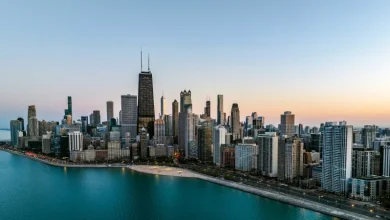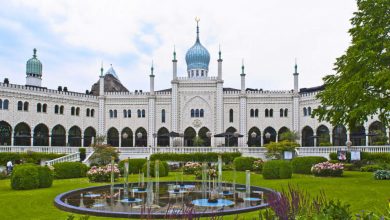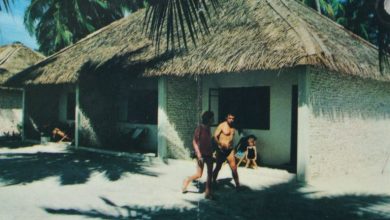
Sweden’s history isn’t only preserved in museums and palaces — it lives on in its hotels. Across the country, manor houses, villas, castles and guesthouses have been reimagined for modern travellers, offering more than a night’s rest. Each carries the imprint of centuries past: stories of noble families, monastic traditions, industrial pioneers and the cultural shifts that shaped Sweden. Staying in one of these properties is less about luxury and more about stepping into a narrative. From west coast villas to lakeside castles and highland retreats, here are ten hotels where heritage remains vivid and alive.
Villa Sjötorp (Lyckorna, West Coast)


Built in 1901 as the summer home of industrialist Carl Emil Haeger, Villa Sjötorp is a wooden seaside villa that captures the elegance of Sweden’s turn-of-the-century architecture. Its carved gables, dragon-head details and Arts & Crafts interiors reflect an era when craftsmanship mattered, setting the tone for a hotel steeped in heritage. The restaurant champions local produce, sourcing seafood from the Bohuslän coast and vegetables from nearby farms — earning recognition in Sweden’s White Guide. Overlooking the Skagerrak, with a garden that runs to the sea, it offers a stay shaped by the coastal landscape that defines life here.
Vadstena Klosterhotel (Vadstena, Östergötland)


Few hotels can claim a setting as rich in history as Vadstena Klosterhotel. Once a royal palace, it became a Bridgettine monastery in the 14th century. Today, it offers the rare chance to stay within one of Sweden’s most significant medieval landmarks. Rooms span historic buildings, some with vaulted ceilings and thick stone walls that echo centuries gone by. The spa draws on monastic calm, with treatments and spaces for reflection. Just steps away lie Lake Vättern, Vadstena Abbey and cobbled streets — reminders that this is more than a hotel, but living Swedish heritage.
Två Skyttlar (Örby, Västra Götaland)


On the shores of Lake Västra Öresjön, Två Skyttlar has grown from modest origins into a family-run countryside retreat. The main building began as a poorhouse in the 1880s, before three local weavers opened a café here in 1950, calling it Tre Skyttlar — “Three Shuttles.” When one left, the name became Två Skyttlar, and it has remained ever since. Later transformed into a course centre and hotel, it still reflects that spirit of community and craft. Guests stay in light-filled rooms with forest and lake views, dine on dishes from local farms and the kitchen garden, and unwind in wood-fired saunas and hot tubs by the water.
Toftaholm Manor (Vittaryd, Småland)


Founded in 1389 by Jöns Skötta of the Stenbock family, Toftaholm has long been a place of power, refuge and legend. The current manor house, built in 1871, stands beside older estate buildings, including the 1640 inn Den Gyllene Abborren with its vaulted cellar and open fires. Stories abound: King Gustav Vasa is said to have met his third wife Katarina Stenbock here, while folklore tells of a tunnel linking the estate to a ruined medieval fort nearby. Guests today relax in wood-fired hot tubs by Lake Vidöstern or in individually styled rooms that mix manor-house elegance with comfort. The resident ghost, Mats, adds a final layer of lore to this centuries-old Småland estate.
Tällbergsgårdens Hotel (Tällberg, Dalarna)


High above Lake Siljan in the timber village of Tällberg, this hotel reflects the cultural heart of Dalarna. The site once housed the village school before Johansson’s boarding house opened here in 1908. Inside, heritage remains central: red-painted timber walls, kurbits-style folk paintings and decorative panels that evoke local traditions. Johansson’s Restaurant, rated in the White Guide, serves seasonal menus with lake views, continuing a century-long tradition of hospitality. Tällbergsgården is more than a hotel: it’s a window into Dalarna’s folk art, storytelling and enduring sense of place.
Sundbyholm Castle (Eskilstuna, Södermanland)


Standing on the edge of Lake Mälaren, Sundbyholm Castle was built between 1639 and 1648 by Admiral Carl Gyllenhielm, son of King Charles IX. Its grounds once belonged to a medieval monastery, and nearby lies the Sigurd Carving, one of Sweden’s most important Viking rune stones. Guests today stay not in the castle itself but in historic outbuildings across the estate — from the Coachman’s Quarters to suites with garden terraces. The castle halls serve as dining and gathering spaces, their interiors recalling centuries of history. With a sandy beach, marina and lakeside paths nearby, Sundbyholm unites heritage with natural beauty.
Stufvenäs Gästgifveri (Söderåkra, Småland)


Dating back to 1798, Stufvenäs Gästgifveri began as guest lodgings for nearby Värnanäs Manor, once home to families linked with Gustav Vasa’s dynasty. Yet history here runs deeper: archaeological finds reveal settlement over 5,000 years old. Inside, original floors, tiled stoves and doors remain, while careful renovations have expanded it into a respected countryside hotel. Known for gastronomy, the inn highlights Småland produce, and its rebuilt wine cellar has earned international recognition. A spa overlooking the coast offers renewal, while the surrounding Örarevet Nature Reserve brings beaches, oak groves and birdlife. Stufvenäs unites tradition, history and comfort.
Strandflickornas Havshotell (Lysekil, Bohuslän)


At the turn of the 20th century, Lysekil blossomed into a fashionable spa town, and Strandflickornas Havshotell carries that legacy. Housed in a 1904 seaside villa, it has been restored with a playful sense of history. Rooms are individually themed, from nautical Captain’s quarters to the Turkish Consul’s Room with canopy bed and vintage details. Beyond the villa, guests can stay in distinctive seaside lodgings — a glass-fronted bathhouse perched on the rocks or a tiny cabin with sweeping fjord views. With wood-fired saunas, hot tubs, kayaking and seal safaris nearby, the hotel captures the West Coast’s maritime spirit — quirky, historic and atmospheric.
Storsätra Mountain Hotel (Grövelsjön, Dalarna)


Opened in 1939, Storsätra Mountain Hotel is recognised as Dalarna’s first alpine retreat. Founded by Margit Jonsson, it pioneered mountain hospitality in Sweden’s southern highlands and still offers wilderness with warmth. Guests stay on a full-board basis, enjoying hearty meals and evenings by the fire, with time to unwind in a wood-fired sauna or hot tub beside the Grövlan river. Winter brings over 100 kilometres of ski trails, while summer opens hiking routes into national parks across Sweden and Norway. Family-run to this day, Storsätra remains a gateway to adventure and a historic refuge in one of Sweden’s most unspoilt landscapes.
Skytteholm Nordic Spa (Ekerö, Lake Mälaren)


Set on the island landscape of Ekerö, Skytteholm traces its origins to Johan Skytte, a 17th-century statesman and royal tutor. The manor was reshaped in the early 1900s, but its historic heart is now paired with a contemporary Nordic Spa. Guests follow elemental rituals by the lakeshore: wood-fired saunas and hot tubs under the sky, heated pools, and lounges for rest. Accommodation balances manor-house elegance with modern simplicity, while surrounding forests and trails connect visitors with nature. Close to UNESCO-listed Drottningholm Palace, Skytteholm is both heritage estate and wellness retreat — where Sweden’s past endures, yet calm and balance prevail.




